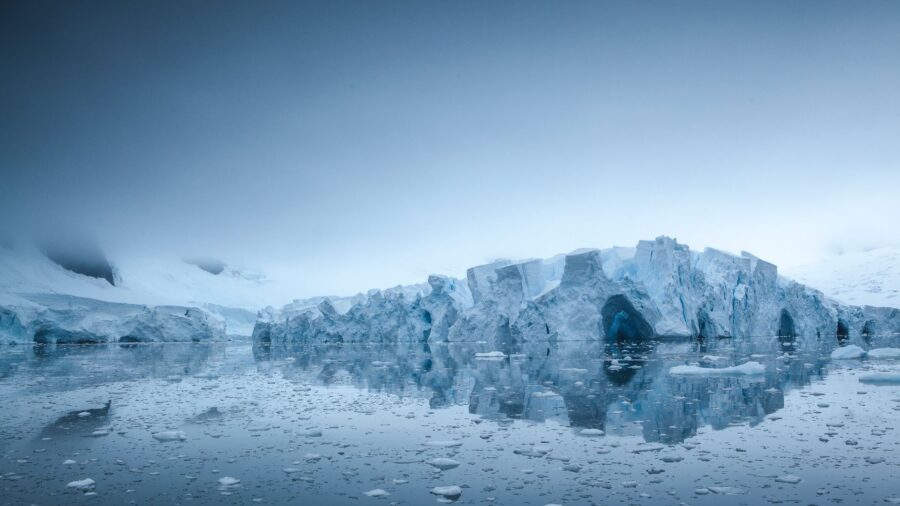New Ice Discovered That Reacts To Heat In Astonishing Way

The inner workings of planets where common materials transform due to intense pressure and scorching temperatures have long been a mystery. Now, scientists have been studying a new type of superionic ice that challenges the understanding of water under these extreme conditions. This exotic ice is believed to exist inside water-rich gas giants Uranus and Neptune, as well as some exoplanets.
Water is typically considered a simple molecule composed of one oxygen atom bonded to two hydrogen atoms. However, water takes on a new form when subjected to extreme conditions inside Uranus and Neptune. Superionic ice differs from frozen water found on Earth, and it is thought to be one of the most abundant forms of liquid in the Universe, Science Alert reports.
This unique arrangement gives superionic ice its conductive properties and keeps it solid at very high temperatures.
The extreme pressure within Uranus and Neptune, two million times greater than Earth’s atmosphere, combined with interior temperatures equivalent to the Sun’s surface, create a setting where water behaves strangely. In 2019, scientists confirmed that oxygen atoms in superionic ice form a solid cubic lattice, while ionized hydrogen atoms flow freely within this lattice, like electrons in metals.
This unique arrangement gives superionic ice its conductive properties and keeps it solid at very high temperatures. Physicist Arianna Gleason and her colleagues at Stanford University and the Stanford Linear Accelerator Center (SLAC) in California recently discovered a new phase of superionic ice by using an unconventional approach to recreate the extreme conditions of Uranus and Neptune.

“Recent discoveries of water-rich Neptune-like exoplanets require a more detailed understanding of the phase diagram of [water] at pressure-temperature conditions relevant to their planetary interiors.”
Physicist Arianna Gleason
Using lasers to create successive shockwaves, they generated pressures of up to two million atmospheres and temperatures exceeding 8,500 degrees Fahrenheit within thin layers of water sandwiched between diamond surfaces. While the conditions were maintained for only a fraction of a second, X-ray diffraction allowed them to reveal the crystal structure of the resulting superionic ice.
This newly discovered superionic ice, named Ice XIX, exhibited a body-centered cubic structure and enhanced conductivity compared to its predecessor, Ice XVIII, observed in 2019. The increased conductivity of Ice XIX is a crucial finding because it has the potential to explain the magnetic fields of Uranus and Neptune.
“Recent discoveries of water-rich Neptune-like exoplanets require a more detailed understanding of the phase diagram of [water] at pressure-temperature conditions relevant to their planetary interiors,” Gleason and counterparts explained in their superionic ice paper, published in Scientific Reports in January 2022.
Conductivity plays a pivotal role in generating magnetic fields. The movement of charged particles, like those in superionic ice, contributes to creating magnetic fields – a concept known as dynamo theory. In the case of celestial bodies like Earth or Uranus and Neptune, the interplay of conductive fluids with different conductivities within their interiors can result in complex multipolar magnetic fields.
The study by Gleason and her team proposes that if Neptune contains two superionic ice layers with differing conductivities towards its core, it will lead to the generation of unique and complex magnetic fields. These magnetic fields, as exhibited by Uranus and Neptune, are different from the typical dipolar magnetic fields of most celestial bodies.
Ice XIX and its enhanced conductivity bring scientists closer to unraveling the mysteries of Uranus and Neptune. The study could also provide closure to a puzzle that began over 30 years ago when NASA‘s Voyager II space probe observed the unorthodox magnetic fields of our Solar System’s ice giants.












